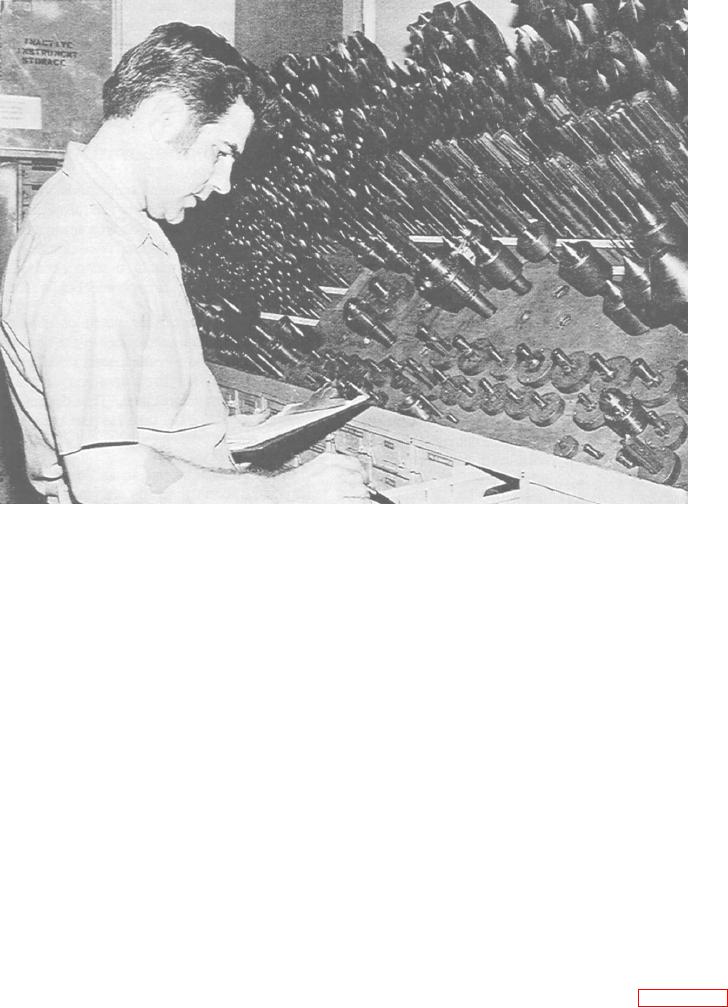
28.333.1
Figure 1-1.--Method of tool storage.
system. Some of the basic considerations are (1) the
Hammers, wrenches, and other tools that do not
issue and custody of tools; (2) replacement of broken,
have cutting edges are normally stored in bins. They
worn, or lost tools; and (3) proper storage and
also may be segregated by size or other designation.
maintenance of tools.
Tools with cutting edges require more space to
prevent damage to the cutting edges. These tools are
Shipboard toolrooms are limited in size by the
stored on shelves lined with wood or felt, on
design of the ship. Therefore, the space must be used
pegboards, or on hanging racks. Pegboards are
as efficiently as possible. Since the number of tools
especially adaptable for tools such as milling cutters.
required aboard ship is extensive, toolrooms usually
tend to be overcrowded. Certain peculiarities in
Make provisions to keep these tools from falling off
shipboard toolrooms also require consideration. For
the boards when the ship is rolling. Store precision
example, the motion of the ship at sea requires that
tools (micrometers, dial indicators, and so forth) in
tools be made secure to prevent movement. The
felt-lined wooden boxes in a cabinet to reduce the
moisture in the air requires that the tools be protected
effects of vibration. This arrangement allows a quick
from corrosion.
daily inventory. It also prevents the instruments from
being damaged by contact with other tools. Use
It's difficult to change permanent bins, shelves, and
rotating bins to store large supplies of small parts,
drawers in the toolroom. However, you can reorganize
such as nuts and bolts. Rotating bins provide rapid
existing storage spaces by dividing larger bins and
relocating tools to provide better use of space.
selection from a wide range of sizes. Figures 1-1,
1-3

